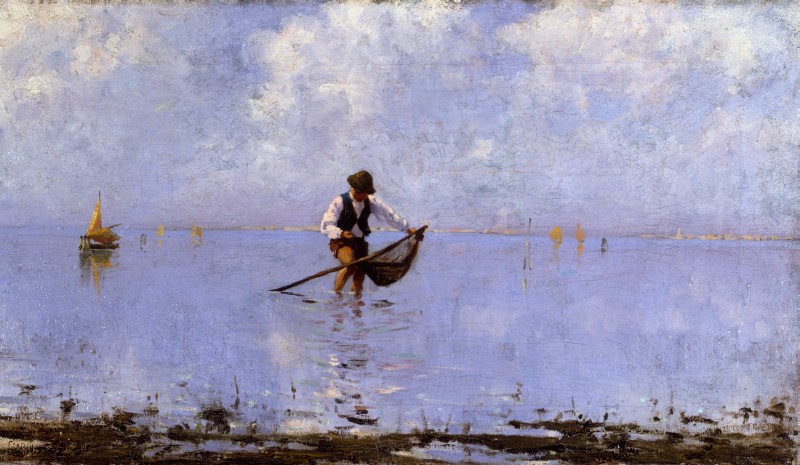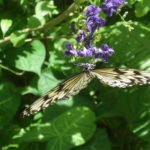We recently visited the McMichael Canadian Art Collection, an art museum nestled in a little forest outside the city. It’s an architectural beauty built of stone and wood, with floor to ceiling windows overlooking the tall trees. The gallery had beautiful collections and exhibitions of various artists, many of which featured artwork from the Arctic.
Long, unpunctuated hours pass by when we are far in such lands, covered by snow and ice, or just timelessness. I myself have lived in a desert, and I’ve also lived in climates of minus forty degrees celsius. And when there isn’t a particular event such as a thunderstorm, or tiny animals to delineate their histories on the ground, nor is there the noise of contemporary life, the internet, and the living inside the interiors – time becomes timing.
In the paintings were the every days of simplicity – braiding baskets, fishing, carrying wood to warm ourselves in the long winters, gathering supplies. And if lay on our backs, somewhere in the Tundra, perhaps we can feel the ice ages and how far we’ve come; of how far in this moment the silence that stretches can tie the quiet corners of our worlds.
We can name things – catalog them, organize them – we can list the plants and birds – but life is not a mere painting – the image cannot be completed in such a way. We can hold the history like a pebble in our hand, or a polaroid photograph. Stillness and the purity of light even encourage us to do so.


But time is perhaps a matter of timing.
Outside the hands, and lines, of our human made clocks are the other clocks, unclockable, unstrikeable by us.
Time is perhaps a subtle thing, sensitive to our quality of it, away from the scheduling, with a spontaneity. Sensitive to our seeing, experiencing, and a certain kind of intimacy.
For many indigenous people such as the Ilongot of the Philippines, time is a variable, undeterminable and unpredictable. It is a subtle element where creativity, expansion within its boundaries, and life itself can become.
And sometimes time is moth – eating away the fabric of our dress we left in our beloved’s bed. Where memories consume themselves day and night, and yet forever scent the thin undersheets. Like wax burning, feeding itself on flames, it reminds itself of its existence, even when it looks like it is slowly disappearing.
What guides the hands of our clocks?
The heart itself. The elasticity of a moment.
In some cultures around the world, time is a lived-in process of nature. Just like for us perhaps – time is a lived-in process of our unique emotional wild lands.
To tell time, for example, in the Andaman forests, there are scent diaries; in the New Guinea, there are star diaries; and the Aboriginal Australians begin their cultivation seasons when the Pleiades appear in the sky.
In Rajastan a moment of evening is called “cattle-dust time”, Madagascar tribes refer to some moments as “the frying of a locust” and the American Lakota people have “Moon of the Snowblind”.
So much of language seems to refer to time in a way that’s connected to nature and wildlife. And we all have our own definitions of meaningful moments – the sound of stars is crickets dancing, the first kiss was new moon and vanilla by the wolf river, “I’ll meet you east of the sun, and west of the moon”.
There are lines inside of us, a string of guiding lights, of rivers, of languages that only the wordless understand. On one side are the facts and the captured images of a reality – and on the other side are the stories of the heart.
We all have our own times within timings – engraved moments that never cease to exist. And especially sometimes – when we come across something so grand and large, not in size but in feeling; something beyond the structures, something that wraps us in timelessness – such as the laughter of a loved one, the eyes of our beloved, the immersion of a creative project, or the soaring wings of a red-tailed hawk that then landed on a branch a few feet away from us – no words would suffice, and no words are needed either.
The clocks might stike midnight, and it’s time to go to bed or turn back into a pumpkin, but we are still somewhere in a space of an eternal timing where the moment continues, like a lover’s dance, on and on and on, and we can enter it and be it, even tomorrow, even the years after, just by a thought, a memory, a scent, or a photograph in our hand, when the door will open once again, and we’ll be somewhere outside the clocks and interiors. Perhaps this is where true time exists.
Time itself is linear only here on earth. In the spiritual realms, time is as fluid as water. Its ever-changing essence is continuously fluctuating, adapting and moving.
As much as we’d like to build roads that are straight and direct, of cement for more certainty and larger view highways, the paths of life are often full of twists and turns, made with invisible lines, perhaps seen only by our hearts.
We meet people not on specific dates marked on our calendar, but through rivers – moving waters of tides, of situations and experiences that flow together, in and away from each other, until the right timing strikes the clocks of our soul’s desire. And yet somehow – even within the boundaries of flesh and lines, it is always the right time.
And then one day we are born – we’ve become physical matter, just like time is a matter of timing, just like moments of love become dates we mark on the calendar of our unique emotional wild lands. Or as imprints, residue memories from past lives carried along the energetic thread of our consciousness.
And perhaps you too have had a time – when you met someone, and at first sight your soul recognized him, remembered him, and your entire body awakened to the memory of him, a memory of love from a time before time before time.


Grateful I sure am, for spending a beautiful day at the gallery with my family, and then indulging in some triple chocolate mousse cake. And what’s the meaning of time anyway unless it’s spent with those we love. When hearts speak, all else stops and time kneels to listen in awe.
In these subtleties of time, is the always and forever.
And it is only ever love.

For more of my writings, browse through my Art of Love.
If you wish to support me and my work, you may do so by sharing it or donate here. For personal readings with me, you may visit my Offerings.
Your support means so much to me! Thank you wholeheartedly!
Cover art by Ciardi Guglielmo, Laguna di Venezia con pescatore, circa 1888, via Wikimedia Commons.




